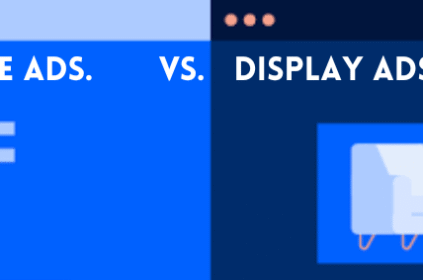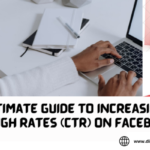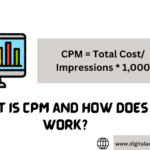In the ever-evolving world of online marketing, targeted display advertising reigns supreme as a powerful tool for capturing attention, driving brand awareness, and ultimately boosting conversions.
But navigating this intricate realm can be challenging, even for seasoned digital marketers and online business owners.
This comprehensive guide is your key to unlocking the secrets of targeted display advertising and maximizing your effectiveness in the digital battlefield.
Throughout this roadmap, we’ll equip you with actionable strategies, practical tips, and industry best practices to help you:
- Precisely target your ideal audience: Craft detailed buyer personas, delve into the world of interest and behavioral targeting, and leverage the power of lookalike audiences.
- Craft captivating ad experiences: Optimize your visuals, messaging, and ad formats for maximum engagement and impact.
- Bid like a pro: Master the art of cost-per-thousand-impressions (CPM), cost-per-click (CPC), and other bidding models to secure the most bang for your buck.
- Measure and analyze with precision: Track key metrics, set campaign goals, and utilize data-driven insights to continuously refine your approach.
By the end of this interesting and insightful journey, you’ll be wielding the mighty sword of targeted display advertising with confidence, ready to defeat your marketing goals and conquer the digital landscape. So, strap yourselves in and prepare to embark on a quest for ultimate advertising mastery!
What Are the Benefits of Display Advertising?

Display advertising offers several benefits for businesses looking to promote their products or services online. Here are some of the key advantages:
#1. Reach and Targeting:
Display advertising provides access to a vast audience across numerous websites and platforms, allowing businesses to reach potential customers wherever they spend their time online.
Advanced targeting options enable advertisers to tailor their campaigns based on various factors such as demographics, interests, behaviors, location, and more.
This precision targeting ensures that ads are shown to the most relevant audience, increasing the likelihood of engagement and conversions.
#2. Brand Awareness:
Display ads play a crucial role in building brand awareness by increasing visibility and exposure. They allow businesses to showcase their brand, products, or services to a wide audience, even if they are not actively searching for them at that moment.
Through consistent display advertising efforts, brands can establish themselves in the minds of consumers, making them more likely to remember and consider them when making purchasing decisions.
#3. Remarketing Opportunities:
Display advertising enables remarketing, a powerful strategy to re-engage users who have previously interacted with a website or shown interest in a product or service.
By targeting these users with relevant ads as they browse other websites or social media platforms, businesses can remind them of their offerings and encourage them to complete a purchase or take another desired action.
Remarketing helps businesses stay top-of-mind with potential customers, increase brand recall, and drive conversions by capitalizing on past interactions.
#4. Flexible Ad Formats:
Display advertising offers a variety of ad formats to suit different campaign objectives and audience preferences. From traditional banner ads to interactive rich media ads and native ads seamlessly integrated into the content, businesses have the flexibility to choose the format that best aligns with their goals and resonates with their target audience.
This diversity in ad formats allows advertisers to experiment with different creative approaches, optimize performance, and maximize engagement and conversion rates.
#5. Measurable Results:
Display advertising provides robust analytics and tracking capabilities, allowing businesses to measure the performance and effectiveness of their campaigns accurately. Advertisers can monitor key metrics such as impressions, clicks, conversions, click-through rates (CTR), and return on investment (ROI) in real-time.
By analyzing these metrics, businesses can gain valuable insights into the behavior and preferences of their audience, identify areas for improvement, and optimize their campaigns for better results.
In essence, display advertising offers you a powerful platform to reach, engage, and convert potential customers online. From its extensive reach and precise targeting capabilities to its role in building brand awareness and driving conversions through remarketing, display advertising provides a range of benefits that can help you achieve your marketing objectives effectively.
How Can You Understand Your Audience?
Imagine trying to hit a bullseye while blindfolded. That’s essentially what ineffective audience targeting feels like. In targeted display advertising, knowing your audience is the fundamental principle that guides every campaign decision.
Why is it important?
- Relevance rules: Imagine showing sports equipment ads to someone obsessed with baking. Not exactly a recipe for success, right? Targeting the right audience ensures your ads resonate with their interests and needs, leading to higher engagement and conversions.
- Efficiency matters: By precisely targeting, you avoid wasting ad spend on irrelevant users, maximizing your return on investment (ROI).
- Personalization pays off: Understanding your audience allows you to tailor your ad messaging and visuals for a more impactful and personalized experience.
So, how do you craft those razor-sharp audience personas?
#1. Demystifying Demographics:
- Age, gender, income, location – these are the basic building blocks of any persona. Analyze your existing customer base and research your target market to understand their demographic makeup.
- Remember: Demographics alone are not enough. They paint a broad picture, but you need finer details to truly connect.
#2. Unveiling Interests & Behaviors:
- What content do they consume? What are their hobbies and passions? What online tools and platforms do they frequent? Dive deeper into their interests and online behavior to truly understand their world.
- Tools to your rescue: Utilize social media insights, website analytics, and audience research platforms to gather valuable data and paint a richer picture.
#3. Beyond the Surface: Psychographics & Values:
- What motivates them? What are their aspirations and pain points? Understanding their deeper values and motivations helps you connect on an emotional level.
- Think creatively: Conduct surveys, analyze customer reviews, and engage in social listening to uncover these hidden gems.
Creating detailed buyer personas is an ongoing process. As you gather more data and interact with your audience, keep refining your personas to ensure they remain accurate and relevant.
With these insights at your fingertips, you’re ready to explore the diverse targeting options available, transforming your audience understanding into powerful advertising strategies.
Targeting Strategies: Hitting the Mark Every Time

Now that you have a clear understanding of your target audience, it’s time to unleash the power of precise targeting methods to reach them effectively. Buckle up, because we’re diving into the arsenal of options at your disposal!
#1. Demographic Targeting:
This is a good starting point for reaching broad audiences based on basic characteristics like age, gender, location, income, and household size.
Though it can be too broad, missing specific nuances within your target audience.
Pro Tip: Combine demographic targeting with other methods for laser-focused precision.
#2. Interest Targeting:
Target users based on their interests, browsing behavior, and online activities.
Utilize keyword targeting, contextual targeting, and audience targeting on platforms like Google Ads and Facebook Ads.
Interests can be dynamic, so regularly update your targeting parameters.
#3. Behavioral Targeting:
Target users based on their past purchases, website visits, and app interactions.
Re-engage website visitors who didn’t convert with relevant ads reminding them of your offerings.
Ensure compliance with data privacy regulations and be transparent about your targeting practices.
#4. Lookalike Audiences:
Target users who share similar characteristics with your existing high-value customers.
Utilize lookalike audience creation features on platforms like Facebook Ads and Google Ads.
Experiment with different audience sizes and targeting parameters to find the optimal sweet spot.
Choosing the right targeting methods depends on your campaign goals, budget, and target audience. Experiment, analyze results, and continuously refine your approach for maximum impact.
In the next section, we’ll explore the art of campaign optimization, turning your targeting efforts into conversion-generating machines!
Campaign Optimization: Fine-Tuning Your Display Advertising Engine
So, you’ve identified your target audience and deployed your targeting strategies. But the journey doesn’t end there! Just like a high-performance engine needs fine-tuning, your display advertising campaigns require continuous optimization to maximize their effectiveness. Let’s explore the key areas where you can turn the dials and push your campaigns into overdrive:
#1. Creative Optimization:
- First impressions matter: A/B test different ad formats (banners, videos, native ads) to see what resonates best with your audience.
- Visual storytelling captivates: Invest in high-quality visuals that align with your brand identity and grab attention.
- Message like a pro: Craft clear, concise, and compelling copy that speaks directly to your audience’s needs and desires.
- Personalization pays off: Utilize dynamic creative optimization (DCO) tools to personalize ad elements based on user data for added impact.
#2. Bidding Strategies:
- Master the models: Understand the nuances of cost-per-thousand-impressions (CPM), cost-per-click (CPC), and other bidding models to optimize your ad spend.
- Start strategically: Begin with automated bidding strategies like “Maximize Clicks” or “Target CPA” to find your bearings.
- Refine over time: As you gather data, transition to manual bidding for granular control and optimize bids based on specific conversion goals.
- Remember: Always set bidding limits to avoid budget overruns.
#3. Landing Page Optimization:
- The final step matters: Ensure a seamless user experience from ad click to conversion on your landing page.
- Relevance is key: Align your landing page content and offer with the message conveyed in your ad to avoid confusing users.
- Clarity reigns supreme: Make it clear what action you want users to take (e.g., purchase, sign up) with a strong call to action.
- Test and iterate: A/B test different landing page elements to see what drives the most conversions.
Optimization is an ongoing process. Regularly track your campaign performance, analyze data, and test different approaches to identify what works best for your audience and goals.
By mastering these optimization techniques, you’ll transform your display advertising campaigns into conversion-generating machines, propelling your business towards success.
We’ll delve into the crucial world of measurement and reporting, equipping you with the tools to measure your progress and make data-driven decisions.
How to Measure and Report Your Campaign Performance

In the fast-paced world of online advertising, data reigns supreme. By measuring and analyzing your campaign performance, you gain invaluable insights to identify what’s working, what’s not, and where to optimize for maximum impact. Let’s shed light on the key metrics and reporting practices that will illuminate your path to success:
#1. Identifying Your North Star: Define Campaign Goals & Metrics
Before diving into data, clearly define your campaign goals. Do you aim for brand awareness, website traffic, lead generation, or direct sales? Aligning your metrics with these goals ensures you’re measuring what truly matters:
- Brand awareness: Track impressions, reach, and engagement metrics like social shares and click-through rates (CTRs).
- Website traffic: Monitor website visits, unique visitors, and page views generated by your campaigns.
- Lead generation: Analyze lead form submissions, cost per lead (CPL), and conversion rates on landing pages.
- Direct sales: Track the number of purchases attributed to your display ads, cost per acquisition (CPA), and return on ad spend (ROAS).
It should be noted that vanity metrics like impressions might look impressive, but focusing on metrics directly tied to your goals provides actionable insights.
#2. Demystifying the Data Jungle: Key Display Advertising Metrics
Now, let’s explore the essential metrics you’ll encounter in your reporting dashboards:
- Impressions: The number of times your ad is displayed.
- Clicks: The number of times users click on your ad.
- Click-through rate (CTR): Clicks divided by impressions, indicating ad effectiveness.
- Cost per click (CPC): The average cost you pay for each ad click.
- Conversions: The number of users who take desired actions (e.g., purchases, signups) after clicking your ad.
- Conversion rate: Conversions divided by clicks, measuring your campaign’s ability to drive desired actions.
- Cost per acquisition (CPA): The average cost you pay for each conversion.
- Return on ad spend (ROAS): Revenue generated from conversions divided by your ad spend.
Remember to analyze these metrics within the context of your campaign goals and historical data to identify trends and areas for improvement.
#3. Tools of the Trade: Platforms & Reporting Best Practices
Leverage the power of analytics platforms like Google Ads, Facebook Ads, and website analytics tools to track your campaign performance in detail. These platforms offer insightful reports, allowing you to drill down into specific demographics, device types, and user behavior.
Pro tip: Schedule regular reporting cycles (e.g., weekly, monthly) to stay on top of your campaign performance and identify areas for optimization promptly.
#4. Actionable Insights: Transforming Data into Growth
Don’t let data simply sit there! Analyze your reports, identify trends, and ask questions:
- Which ad formats resonate best with your audience?
- Are certain demographics driving more conversions?
- What landing pages convert at higher rates?
- Where are budget leaks occurring?
Use these insights to refine your targeting, optimize your creatives, and adjust your bidding strategies for continuous improvement.
By harnessing the power of measurement and reporting, you unlock the secrets of campaign success, ensuring your display advertising efforts deliver tangible results and propel your business forward.
Conclusion
The journey doesn’t end here! This guide has equipped you with the knowledge and tools to embark on a thrilling adventure in the realm of targeted display advertising. Remember, the key to success lies in continuous exploration, data-driven optimization, and a relentless pursuit of excellence.
Armed with the knowledge and strategies within this guide, you have the power to:
- Reach your ideal audience with laser precision.
- Craft captivating ad experiences that resonate and convert.
- Optimize your campaigns for maximum impact and ROI.
- Unleash the full potential of targeted display advertising and ignite your digital domination!
So, what are you waiting for? Start crafting your targeted display advertising masterpiece today and witness your brand ascend to new heights of success!
Remember, we are always here to assist you on your journey of successful online advertising.










